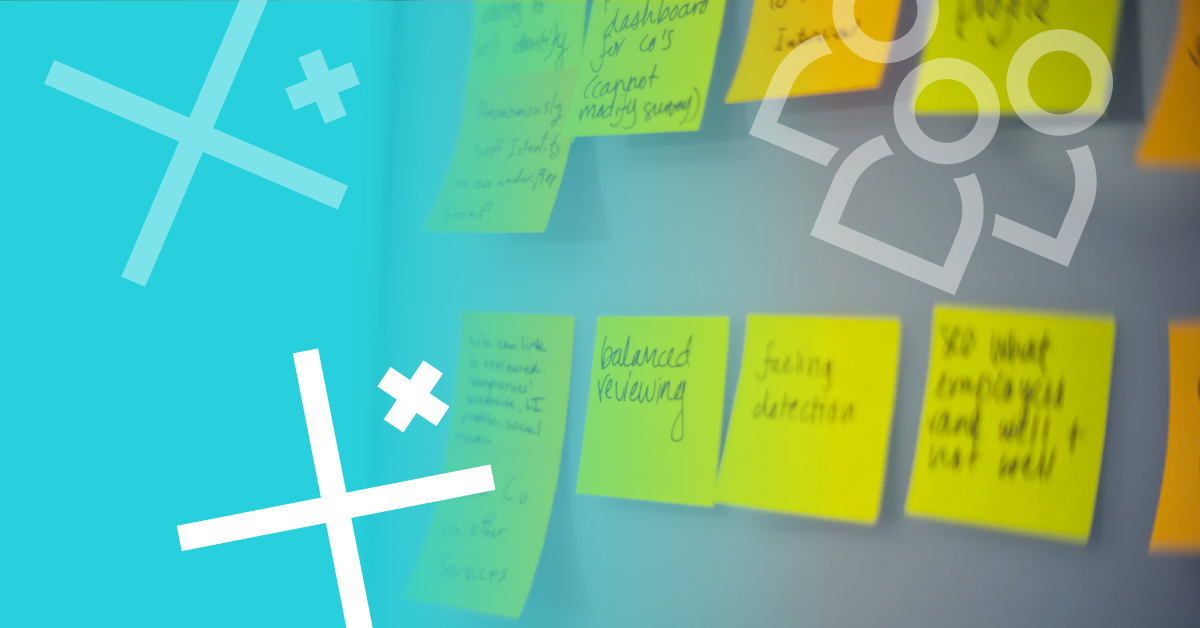

At what., we work with emerging companies to design, build and launch their products online. Product validation testing is an important step after the MVP definition and helps founders understand how real customers respond to the product or value proposition.
With that in mind, we have created a lean product validation workflow to help you plan a campaign next time you want to test and validate your hypothesis. This will help you kick off a successful product validation campaign, save you money and speed up the learning process.
Forget personas
Traditional marketers spend ages defining personas, this is mostly a waste of your time and it doesn’t apply to modern algorithms. Nowadays, we use social content and let Facebook, Instagram, LinkedIn, and Google algorithms decide who our target audience is. Sometimes, the audience defined by the algorithm turns out to be different from what we had in mind.
Phase 1 – Launching a validation campaign – starting with ROAS/ROI and creatives
Ultimately, the customer feedback and unit economics will decide if your MVP “can fly” and most importantly if you’ll get an investment. That’s why you need to set targets for Return On Advertising Spend (ROAS), Customer Acquisition Cost (CAC) or Return on Investment (ROI) and defining the initial messages you want to share. The overall journey to hit your ROI target could take months, depending on how well campaigns are run and you’ll be learning throughout the process. In our process, we set a ROAS target and then work to nail the key messages and content over time to sell your product and reach your goal.
Creative matters! Example creative approach – a lunch box gadget
Idea A – Work on an engaging video showing how great your product is. It could be happy people eating, or a relaxed person snacking after exercising. The ad then displays a link to the website where your audience can find out more.
Idea B – Focus on around ten successful influencers who explain the product and show how great it is, encouraging potential customers to buy it. After that, the same content is reused for promotion on one or more social media channels. Alternatively, if you already have customers we could pick a few of them to post testimonials. Authentic content works particularly well, as it’s perceived as being sincere by other customers.
Idea B tends to be the more successful of the two, as option A is less effective and more expensive.
The point is that you need good content to validate your MVP. Running a campaign with poor creative content won’t give you a realistic benchmark for future growth.
Once you have your targets, creatives and user journey prepared you can set the campaign live.
Phase 2 – Audiences and validation campaign optimisation
It’s difficult to say how different audiences will react to any messages you put out. That’s why we iterate and optimise for as long as is necessary, learning from selected audiences and fine-tuning ads to perform as well as possible among them.
For example, we could learn that mums respond really well to the message “the best on-the-go lunch for your kids”, leading to us creating very specific related content. After a few rounds of experiments, we will end up having gained even more specific, related data, allowing us to define our audiences and messages very precisely, therefore providing us with a realistic view of what’s achievable.
In this phase, revenue isn’t the most important aspect. Instead, it’s important we experiment, test and learn to guarantee success in the following stages. This phase needs to take no longer than a couple months, so don’t let it drag – in this phase, it’s about testing various approaches and making radical optimisation changes.
Phase 3 – Planned campaign phase
Once you have tested enough you’ll have a good idea where you can get good performance and you can enter a slightly more stable campaign planning work. This is where we split the budget across various channels (i.e. Google Search, Facebook, Instagram, YouTube, Digital display advertising, remarketing, etc.). You’ll be running ads while continuing to invest in influencers and your own customers, creating fresh content.
In this phase, you can monitor the performance of your ads far more accurately and you care about ROI much more than in Phase 2.
What if my validation campaign fails?
Some products simply won’t sell. However, there is no way to predict this without testing whether people like your product. Your ROAS could be as high as 700%, but it could also be as low as 20%. The options put forwards above are, therefore, relatively risk-free.
How to reduce risk and lower costs?
Speed of testing, gaining insights and making adjustments typically correlates with the amounts invested in the product validation campaigns. A smart approach to creative creation in phase 1 and quick decisions and radical optimisation in phase 2 will massively reduce your budget and involvement from agencies.
Should I do it in-house?
No – of course, we’re biased, but if you want to get credible, best in class numbers to benchmark your product vs. the market you want a world-class campaign. A well-executed validation campaign will improve your credibility when pitching your product to the investors and you’ll also learn more if you work with experts. So, unless you have years of marketing experience, we recommend giving this task to specialists.
We truly value our relationships with clients, so we invest time in educating and sharing knowledge. For us, it is important that business owners understand the important nuances of advertising and campaign planning that are universal across all channels, including Google ads, Facebook and Instagram Ads, and LinkedIn Ads. Please get in touch if you’d like to find out more about how our growth hacking agency can help you.